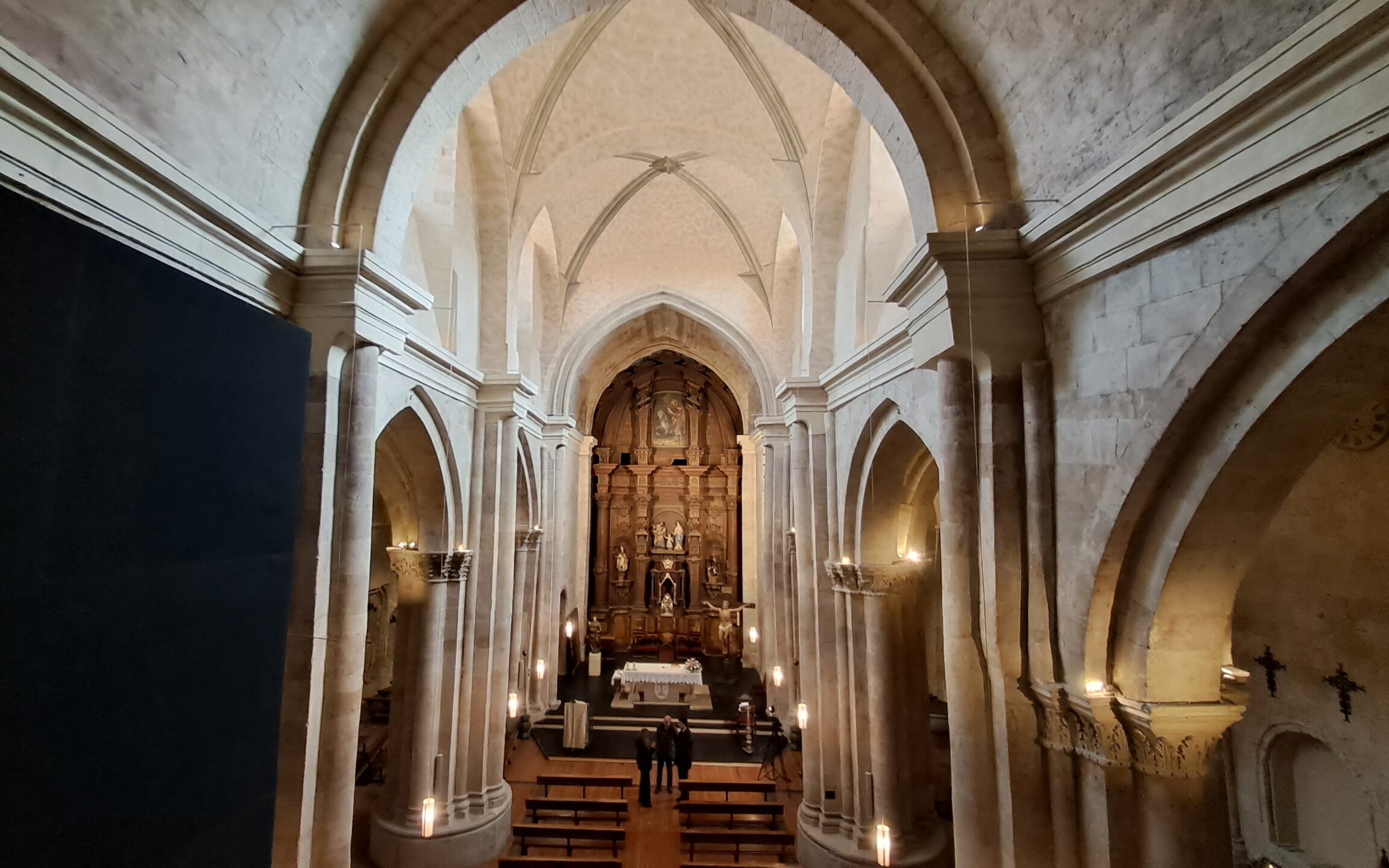The church of San Martín de Tours recovers its splendor thanks to the Atlantic Romanesque Plan
The Minister of Culture, Tourism and Sports of the Regional Government of Castilla y León, Gonzalo Santonja Gómez, and the president of Fundación Iberdrola España, Fernando García Sánchez, visited the church of San Martín de Tours this morning to inaugurate and check in situ the result of the latest work carried out in the building as part of the Atlantic Romanesque Plan, promoted by both entities.
During their visit, they were accompanied, among others, by the president of the Santa María la Real Foundation, Ignacio Fernández Sobrino, and the director of the Iberdrola Spain Foundation, Ramón Castresana. In this case, the intervention has focused on the restoration and lighting of the interior of the church, to adapt it to the requirements of a space located in the heart of a historic city, which combines its liturgical use with the artistic and historical interest it arouses among the many visitors who pass through its doors every day. The work consisted of recovering the original mortars and finishes.
Different phases of intervention
During the visit to the temple, it was also recalled that the intervention process has lasted several years. In successive phases, it has been possible, on the one hand, to correct the structural problems of the building; on the other, to enable an exhibition route and, finally, to condition the interior of the church.
The existing deformations in the pillars, arches, and vaults of the three naves of the building, the result of the construction itself, and different modifications throughout its history justified a complete study of its constructive sequence, which included an analysis of the evolution of its architecture, undertaken by several multidisciplinary teams.
A precision survey was also carried out, which was key to understanding the structural behavior of the temple and confirmed that the loads supported by the Romanesque walls of the building were unbalanced and needed to be redistributed to improve the structural safety margin. The work focused on the roof of the church, modifying its support points to better distribute its weight on the Romanesque walls.
This action was added to other emergency interventions, such as those carried out in the first section of the Gospel nave, over the so-called Puerta del Obispo, which concentrated most of the damage. In the same way, the access through the north door of the temple was recovered and an information and visitor reception point was set up. At the same time, the access to the Chapel of Carmen was improved, where a rich Romanesque doorway with original polychromy was preserved, and it was provided with lighting more in accordance with the whole and more efficient.
Monitoring
In addition to the intervention itself, to know the real state of the building, the temple was incorporated into the Monitoring System (MHS), developed by the Santa María la Real Foundation, and temperature and humidity sensors were installed at very specific points of the building. In parallel, structural movements, both static and dynamic, were monitored by installing an accelerometer and clinometers in the north and south walls. The joint analysis of all these variables made it possible to understand the evolution of the degradation process, outline its causes, and, more importantly, propose the most appropriate solution for each pathology.
Atlantic Romanesque Plan
The Atlantic Romanesque Plan is a cross-border cooperation initiative for the conservation of cultural heritage, which includes projects for the restoration and enhancement of some twenty Romanesque temples located in the Spanish provinces of Zamora and Salamanca and the Portuguese regions of Porto, Vila-Real, and Bragança. It is an example of institutional cooperation and public-private participation since it is promoted by the Junta de Castilla y León, the Iberdrola Spain Foundation, and the Portuguese Ministry of Culture.
In the province of Salamanca, the Plan has carried out different actions, not only in the church of San Martín de Tours but also in the cathedral of Ciudad Rodrigo or the towns of Forfoleda, Yecla de Yeltes, Hinojosa de Duero, Cerralbo, San Felices de los Gallegos or Carrascal de Velambélez.
The technical support of the Santa María la Real Foundation, as well as the collaboration of the dioceses of each territory, in this case, that of Salamanca, is available for each one of the actions.

